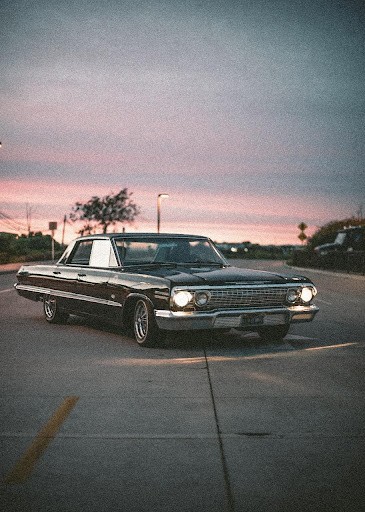Restoring an antique car is a deeply fulfilling journey for any automotive enthusiast. The allure of bringing a classic vehicle back to its former glory is undeniable. However, before you embark on this exciting project, it’s crucial to understand the intricacies involved. Knowing what lies ahead will help you navigate potential challenges and ensure a smoother, more rewarding restoration process. While hands-on experience will undoubtedly be your greatest teacher, this guide outlines the essential considerations before you start repairing antique cars, provides insights on budget-friendly approaches, and details a step-by-step process to get your vintage vehicle running and looking its best.
Key Considerations Before You Start Repairing Antique Cars
Before diving headfirst into the antique car repair process, taking a moment to consider these crucial aspects will significantly streamline your project and save you from future headaches.
The Essential Planning Phase
Effective planning is the cornerstone of any successful antique car repair. Start by asking yourself these fundamental questions:
- What is your budget for repairing antique cars?
- What is your projected timeline for completion? Do you have a specific target date? Remember, your budget will directly influence your timeline.
- Where will you be working on your antique car? Do you require a dedicated garage space? Can you undertake the repair work at home?
- Are you familiar with the step-by-step process of repairing antique cars? Understanding the process will help you determine if this project is the right fit for you.
While precise answers aren’t necessary at this stage, having ballpark estimates will equip you to be better prepared and reduce potential stress. As your project progresses, you can refine these details and adjust your plan accordingly.
Defining Your Antique Car Repair Budget
If you’re working with a limited budget, repairing your antique car will necessitate careful planning and resourcefulness. The fundamental question is: what is the total amount you can realistically allocate to this entire project? Once you have this figure, you can then distribute funds for the car itself, necessary tools, and replacement parts.
Before acquiring an antique car, clarify your restoration goals. Are you aiming for a concours-level, fully original restoration for regular driving, or is your vision to preserve it primarily as a collector’s item for occasional outings?
For a comprehensive antique car repair focused on restoring it to its original driving condition, remember to factor in the ongoing need for parts. Furthermore, if you plan to outsource certain aspects of the repair, be sure to budget for professional assistance.
Perhaps you already have a specific car in mind, giving you a starting point for cost estimation. If budget is a major constraint, explore local junkyards, online marketplaces like Facebook Marketplace, and automotive classifieds for more affordable antique car finds.
TIP: For a detailed breakdown of budget planning, consult the Beginner’s Guide to Restoring a Classic Car.
Alt Text: Antique car body being prepped for restoration work in a well-equipped garage, showcasing the initial stages of a repair project.
Locating the Ideal Antique Car for Repair
When purchasing an antique car for repair, your budget will likely guide your selection. If you have a particular model in mind, resources like Classic Car Value can provide insights into potential market prices.
TIP: Explore local listings and directories, and don’t overlook online platforms such as eBay or Craigslist in your search for a project car.
Keep in mind that older cars typically require varying degrees of repair. Therefore, conduct thorough inspections and due diligence before making a purchase.
Essential information to gather includes the seller’s ownership duration, the number of previous owners, and the presence of a clear title. Proper documentation is crucial to ensure the vehicle is not stolen and legally transferable.
TIP: For in-depth guidance on evaluating project cars, refer to the Beginner’s Guide to Restoring a Classic Car.
RESOURCES FOR FINDING PROJECT CARS:
CarsOnline.com – Project Cars for Sale
ClassicCars.com – Classic Cars for under $5,000
AutoTrader.com – Classics Listings
Sourcing Used Car Parts and Tools for Your Repair
To minimize expenses, consider sourcing reusable or repurposed items from various locations, including local junkyards, eBay, Facebook Marketplace, and specialized brick-and-mortar stores. Antique car shows and swap meets are also excellent venues for finding used parts for repair projects.
For comprehensive details on both general and specialized tools required, consult the Beginner’s Guide to Restoring a Classic Car.
Protecting Your Antique Car During the Repair Phase
Safeguarding your car from weather elements, theft, and vandalism is paramount throughout the repair process. Effective protection methods include:
- Weatherproof and potentially heated garage: This is the optimal solution, especially during extreme temperatures. A secure lock further enhances protection.
- Wooden shed or barn: Ensure the space is dry and well-ventilated to prevent moisture buildup inside the car.
- Car cover: While not theft-proof, a car cover effectively shields against sun damage, water spots, and surface rust.
- Gazebo: Ideal for sun protection but less suitable for colder climates or comprehensive weather protection.
The Step-by-Step Antique Car Repair Process
Alt Text: Detailed view of a classic car chassis being meticulously restored, highlighting the intricate work involved in frame repair and preparation.
Even if you prefer a spontaneous approach to projects, a degree of structured planning is vital for antique car repair. This encompasses systematically dismantling the car, organizing parts, and proceeding through rebuilding and reassembly in a logical sequence.
Here’s a general overview of the typical repair process:
1. Complete Car Disassembly
The initial step involves stripping the car’s interior, including the dashboard, wiring harnesses, engine, gearbox, external panels, windows, and headlights.
SHOP: Vintage and Classic Car & Truck Headlights
2. Brake System Inspection and Potential Upgrade
Before disassembling the brakes, thoroughly inspect their condition to assess the need for replacement. Worn brakes often exhibit noise. A stiff brake pedal may indicate a failing brake booster requiring replacement. Note any parts that require ordering after removal.
At this stage, you can choose to maintain the original equipment manufacturer (OEM) drum brakes or consider a disc brake conversion for improved performance. Even if you opt for repair now, a disc brake conversion could be a worthwhile upgrade in the future. The following video details the conversion process.
[Example Video Link – Replace with actual video link if available]
EXPLORE COMMON BRAKE ISSUES:
How Does a Brake Booster Go Bad? (Signs of Failure)
The Basics of Brake Noise: The Quiet Braking Checklist
Why is My Brake Pedal Soft? How to Diagnose and Fix
3. Powder Coating Application for Metal Components
Powder coating provides a durable and aesthetically pleasing finish for bumpers, wheel trims, and other non-rusting metal parts. Its superior durability makes it a preferable alternative to traditional paint.
RELATED RESOURCE: Using Powder Coating in Your Car Restoration
4. Paint Stripping and Rust Removal
Remove existing paint using a sander or chemical paint stripper. Address rust by either replacing affected parts entirely, which is the most effective long-term solution, or treating the rust for short-term remediation.
5. Sealing, Priming, and Painting
Applying a sealant to the car’s underside protects against corrosion and stone chips. Following this, proceed with body filling, sanding, and priming to prepare the car for painting. Ensure meticulous dust removal before applying paint for a flawless finish.
6. Engine Assessment
The engine often represents a significant expense. When sourcing a used engine, prioritize options with low mileage. Also, assess components like the water pump, valves, and timing chain, as these may require replacement.
7. Inspection of Remaining Car Parts
Thoroughly inspect all remaining components, from the radiator to the air conditioning system. These parts may benefit from powder coating or painting to enhance their appearance and longevity.
8. Integrating Modern Safety Features
Most antique cars lack contemporary safety features like airbags and seatbelts. Installation of these elements is crucial for enhanced safety.
9. Rewiring and Reassembly
The final phase involves rewiring the car and reassembling components including the brakes, suspension, gearbox, cooling system, and dashboard. Refit lights and windows. Complete interior work, including upholstery.
Alt Text: Professionally restored antique car interior, showcasing new upholstery, dashboard, and steering wheel, exemplifying the final stage of a high-quality repair project.
Is Antique Car Repair the Right Project for You?
Antique car repair is an immensely rewarding endeavor. While the considerations may seem extensive, don’t let them deter you from pursuing your passion. With meticulous planning, a well-defined timeline, realistic budget expectations, and a solid understanding of the repair process, you can confidently embark on realizing your dream antique car project.


